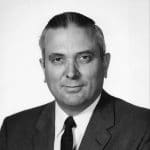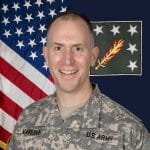Celebrating 50 Years of Discovery at TUNL

For 50 years, NC State has been part of one of the most innovative and successful research collaborations in the country.
The Triangle Universities Nuclear Laboratory (TUNL) dates to November 1965, when the U.S. Atomic Energy Commission announced a $2.5 million award shared equally between NC State, Duke University and UNC Chapel Hill. The award represented a significant step forward in the Nuclear Age and was a defining moment toward the development of today’s science-rich Triangle area. Today, even as the goals of nuclear research have changed, TUNL continues to thrive.
On the weekend of Nov. 6-8, current and former students, post-doctoral researchers, faculty, staff, research collaborators and other friends of the laboratory converged on TUNL’s facilities at Duke to celebrate 50 years of successful research. The anniversary celebrated TUNL’s many research achievements and its 280 doctoral graduates, many of whom have gone onto prominent positions in government, business and academia.
Below are some of the many TUNL alumni who studied at NC State.
 Dr. Undraa Agvaanluvsan has worked in a number of prominent scientific, policy and cultural affairs positions aimed at promoting and improving life in Mongolia, her native country. After graduating from NC State in 2002 with a Ph.D. in physics, she conducted postdoctoral research work at Lawrence Livermore National Laboratory. Her research interests eventually broadened to include policy-related work, including serving as a science fellow and a visiting professor at Stanford University, where she focused on nuclear energy studies. She also served as an adviser to Mongolia’s Minister of Foreign Affairs and as an ambassador-at-large on nuclear energy issues for the country’s the Ministry of Foreign Affairs and Trade. Her current positions include serving as the director of the board of the Mongolian-American Scientific Research Center; executive director of The Strategy Academy, a policy think-tank in Mongolia; and chair of the board of the Mongolian National Fashion Chamber. She worked at TUNL during her graduate studies at NC State.
Dr. Undraa Agvaanluvsan has worked in a number of prominent scientific, policy and cultural affairs positions aimed at promoting and improving life in Mongolia, her native country. After graduating from NC State in 2002 with a Ph.D. in physics, she conducted postdoctoral research work at Lawrence Livermore National Laboratory. Her research interests eventually broadened to include policy-related work, including serving as a science fellow and a visiting professor at Stanford University, where she focused on nuclear energy studies. She also served as an adviser to Mongolia’s Minister of Foreign Affairs and as an ambassador-at-large on nuclear energy issues for the country’s the Ministry of Foreign Affairs and Trade. Her current positions include serving as the director of the board of the Mongolian-American Scientific Research Center; executive director of The Strategy Academy, a policy think-tank in Mongolia; and chair of the board of the Mongolian National Fashion Chamber. She worked at TUNL during her graduate studies at NC State.
Dr. Ryan Foster was director of clinical medical physics and an assistant professor at the University of Texas Southwestern Medical Center, a highly regarded academic medical center in Dallas, before recently joining Carolinas Healthcare System in the Charlotte area. His research interests include assessing tumor response, normal tissue tolerance, and patient localization for radiation therapy. After earning his Ph.D. in physics from NC State in 2004, he went on to a medical physics residency in the Department of Radiation Oncology at the University of Nebraska Medical Center. He then accepted a faculty position at that center as an instructor of radiation oncology, where he performed research supported by the National Institutes of Health. In 2008, his laboratory moved to UT Southwestern Medical Center. Foster is certified by the American Board of Radiology in Therapeutic Radiological Physics. He worked at TUNL while pursuing his graduate degrees NC State.
Dr. Stephanie Frankle is a program manager at Los Alamos National Laboratories (LANL), one of the largest science and technology institutions in the world. She has worked at LANL since undertaking a postdoc at the facility in the early 1990s. Her experiences included everything from explaining that cut-up slices of a Japanese battleship could be used for shielding to the various considerations the government makes when funding research and operations. In 1994, she became a technical staff member at LANL, eventually leading the nuclear, atomic and equation-of-state data efforts for the nuclear weapons program. She transitioned to the laboratory’s global security programs in the mid-2000s, leading the pre-detonation and post-detonation nuclear forensics program. During this time, she worked with federal agencies to craft the national response program. She transitioned to her current position in 2014. Frankle worked at TUNL as a graduate student, earning her Ph.D. in nuclear physics from NC State in 1991.
 Dr. Caesar Jackson is interim dean of the School of Graduate Studies at North Carolina Central University, serving as the top administrator for the university’s principal academic unit for graduate and professional education. Jackson received his Ph.D. in nuclear physics from NC State in 1992 and then joined the physics faculty at NC A&T State University. He rose through the ranks and eventually became interim dean of the university’s College of Arts and Sciences. He joined NC Central in 2005, first serving as dean of the College of Arts and Sciences and then as dean of the College of Science and Technology. He entered his current position in 2012. Jackson is also a senior scientist with Blacque Research Systems, a technical and educational consulting firm in Research Triangle Park. He worked at TUNL as a student and as a visiting scientist while on the faculty at NC A&T.
Dr. Caesar Jackson is interim dean of the School of Graduate Studies at North Carolina Central University, serving as the top administrator for the university’s principal academic unit for graduate and professional education. Jackson received his Ph.D. in nuclear physics from NC State in 1992 and then joined the physics faculty at NC A&T State University. He rose through the ranks and eventually became interim dean of the university’s College of Arts and Sciences. He joined NC Central in 2005, first serving as dean of the College of Arts and Sciences and then as dean of the College of Science and Technology. He entered his current position in 2012. Jackson is also a senior scientist with Blacque Research Systems, a technical and educational consulting firm in Research Triangle Park. He worked at TUNL as a student and as a visiting scientist while on the faculty at NC A&T.
 Dr. Art Menius was one of the most prominent researchers and administrators at NC State during the middle part of the 20th century and was instrumental in TUNL’s formation. Menius joined the NC State physics faculty in 1949 and became deeply involved in the design, implementation, and operation of the first non-government nuclear reactor in the United States on NC State’s campus. Menius was named head of the Department of Physics in 1958. In 1960, became the founding dean of the School of Physical Sciences and Applied Mathematics, which was eventually renamed the School of Physical and Mathematical Sciences (PAMS). He held the position for 21 years until his retirement, and during that time he helped forge the TUNL partnership. Menius guided the school to a position of prominence and was particularly successful in obtaining financial support. He received his Ph.D. from UNC-Chapel Hill in 1942.
Dr. Art Menius was one of the most prominent researchers and administrators at NC State during the middle part of the 20th century and was instrumental in TUNL’s formation. Menius joined the NC State physics faculty in 1949 and became deeply involved in the design, implementation, and operation of the first non-government nuclear reactor in the United States on NC State’s campus. Menius was named head of the Department of Physics in 1958. In 1960, became the founding dean of the School of Physical Sciences and Applied Mathematics, which was eventually renamed the School of Physical and Mathematical Sciences (PAMS). He held the position for 21 years until his retirement, and during that time he helped forge the TUNL partnership. Menius guided the school to a position of prominence and was particularly successful in obtaining financial support. He received his Ph.D. from UNC-Chapel Hill in 1942.
Col. Gerard Vavrina is chief of staff with the U.S. Army’s 20th Chemical, Biological, Radiological, Nuclear and Explosives Command (CBRNE). In this position, he coordinates and directs staff actions in support of the commanding general, serves as the senior nuclear and counterproliferation officer in the command, and provides advice on all nuclear and radiological matters. After earning his Ph.D. in nuclear physics from NC State in 1996 (work that included research at TUNL), he began his military career in the U.S. Army Medical Service Corps. In 2003 and 2007, he deployed to Iraq with the U.S. Army Nuclear and Chemical Agency’s Nuclear Disablement Team. He also served in the Pentagon and as the program manager for operations and exercises in the Department of Energy/National Nuclear Security Administration Office of Emergency Response. His awards and honors include the Defense Superior Service Medal and the Bronze Star.
- Categories:



